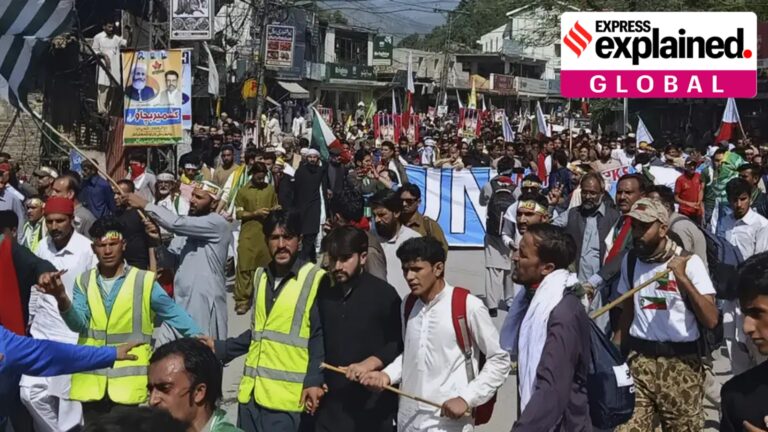The violence erupted after about 70 members of the Joint Awami Action Committee, an organization led by traders in the region, were detained. arrested during a strike To protest against rising food, fuel and utility costs. Pakistan’s economic crisis and high inflation have caused hardship for its people, and some traders have been further hurt by the suspension of trade with India.
Protests in PoK
On Friday, traders took to the streets to protest against the soaring prices of electricity and food. There was a similar protest in August 2023 against high electricity prices.
The general strike brought Muzaffarabad, PoK’s capital and largest city, to a standstill, with public transport, shops, markets and businesses closed. A large number of protesters broke barricades and clashed with police in Mirpur and Muzaffarabad districts. On Sunday, paramilitary Rangers were deployed to guard government facilities, including the Legislative Assembly and the courthouse.
Pakistan’s economy has been experiencing extremely high inflation and dismal economic growth for more than two years due to rising energy costs. According to Dawn newspaper, consumer inflation has exceeded 20% since May 2022 and reached 38% in May 2023.

suspicion of discrimination
PoK leaders are protesting alleged discrimination by the Islamabad government in the distribution of power to the region. Dawn reported on the region’s Chief Minister Chaudhry Anwarul Haq’s complaint that he is not receiving his fair share of the 2,600 MW of hydropower produced by the Neelam-Jhelum project.
Mr. Haq also said that requests for resources to increase salaries of civil servants in the recent budget were not met, forcing him to divert development funds to pay civil servants.
Collapse of Indian trade

Polish traders were hit hard when India raised tariffs on Pakistani products (such as dry dates, rock salt, cement and gypsum) to 200% in the wake of the Pulwama terror attack in February 2019. As a result, Pakistan’s exports to India fell below average. From March 2019 to $45 million a month in 2018, he was making just $2.5 million a month in July. dawn report.
The situation became more difficult after Pakistan suspended all trade following India’s constitutional reforms in Jammu and Kashmir in August 2019. Trade between India and Pakistan has shrunk to a low of about $2 billion a year over the past five years, a fraction of that amount. Of the $37 billion trade potential estimated by the World Bank.
pakistan economic crisis
Pakistan’s foreign exchange reserves have declined significantly since global food and fuel prices rose in the aftermath of the Russia-Ukraine war. A similar balance of payments crisis devastated Sri Lanka in 2022-2023, prompting India to extend its aid package.
According to the State Bank of Pakistan, the country’s foreign exchange reserves have fallen from a peak of $20.1 billion in August 2021 to $2.9 billion in February 2023, just enough to cover one month’s worth of imports. . Pakistan imports almost 40% of its total primary energy supply.
Pakistan’s economy is largely aid-dependent, the private sector is underdeveloped, and the stock market has shown little growth over the years. The country’s gross domestic product (GDP) contracted by 0.17% during FY23. The International Monetary Fund (IMF) recently said that Pakistan needs total loans worth $123 billion over the next five years, with the country expected to seek $21 billion in fiscal year 2024-25 and $23 billion in fiscal year 2025-26. He said that.
© Indian Express Private Limited
Date first uploaded: May 14, 2024, 06:30 IST


